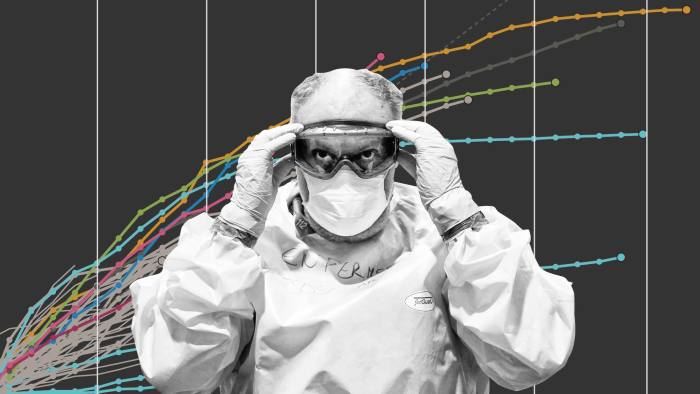Nearly 29m more people will fall into poverty this year in Latin America and the Caribbean because of the economic collapse triggered by the coronavirus, setting the region back more than a decade in its struggle to reduce inequality, a top UN official has warned.
“We stand before another lost decade,” said Alicia Bárcena, head of the UN’s Economic Commission for Latin America and the Caribbean (ECLAC), in an interview. “The region already had seven years of bad economic performance even before the virus.”
A combination of weak commodity prices, the oil market crash, a sharp drop in remittances and a collapse in tourism has prompted forecasts that the pandemic will damage Latin America’s economies more than those of any other developing region. The IMF predicted this month that GDP in the continent would fall 5.2 per cent this year, a far steeper fall than in sub-Saharan Africa, the Middle East or south Asia.
Projections from ECLAC published this week show the poverty rate across Latin American and the Caribbean rising to 34.7 per cent by the end of the year, its highest level since 2007. The numbers in extreme poverty are forecast to rise by 16m to 83m.
Latin America is already the world’s most unequal region in terms of income, and the expected sharp increase in poverty comes only months after a wave of street protests over inequality and inadequate health, welfare and education systems shook countries from Colombia to Chile.
“The social crisis which exploded last year is a sign of the enormous inequality which continues to overwhelm our region,” Ms Bárcena said. “This crisis could exacerbate those problems, especially if the income of the poorest is not protected.”
Just over half of Latin Americans work in the informal or black economy, meaning there are no reliable records of how much they earn or even whether they are working at all. This complicates the task of governments trying to target subsidies at the most vulnerable.
But some experts believe the region has learnt from its experience in reducing poverty over the past two decades and is better equipped to move aid quickly towards the poorest.
Santiago Levy, a senior fellow at the Brookings Institution in Washington, said that when Latin America last suffered a “lost decade” in the 1980s — when a debt crisis triggered a deep recession — the causes of poverty in the region were not well understood and governments made indiscriminate cuts to public spending, deepening the social crisis.
Subsequently, countries such as Brazil, Argentina and Colombia took advantage of the long commodities boom that ended in 2014 to develop conditional cash transfer programmes to alleviate poverty.
“More can be done now to protect the poor than in previous crises,” said Mr Levy, who served as a senior finance ministry official in Mexico in the 1990s, when the government introduced a major anti-poverty programme. “Whether governments have the fiscal space or want to protect the poor is another question.”

Peruvian police stop day labourers from entering Lima after a ban on travel between provinces. Many in the region’s informal economy have lost their income © AP
Peru’s effort to fight the virus was among the swiftest in Latin America. The government imposed a strict lockdown in mid-March. President Martín Vizcarra pledged an immediate cash subsidy of 360 soles ($107) to 2.7m needy families in urban areas and followed up with a larger handout to 1m rural homes.
The money was available on March 23 and instructions for claimants were straightforward: Peruvians had to enter their identity card number on an internet portal and were assigned a date and time to report to a bank to collect the cash.
Editor’s note

The Financial Times is making key coronavirus coverage free to read to help everyone stay informed. Find the latest here.
Maria Luisa Puig, an analyst at Eurasia who follows Peru, said Mr Vizcarra’s overall response to the virus crisis had been “among the most rapid and robust in the region”, probably because of concerns over the precarious state of healthcare in the country.
The cash transfers were “a very quick and direct injection of resources to the people who are poorest and without a job or unable to perform their work in the informal economy”, she said.
Among the region’s major economies, Argentina, Brazil, Colombia and Chile have also all announced new or expanded programmes of cash transfers to their poorest and most vulnerable citizens.
But short-term handouts are only a small part of the challenge, say analysts.
Brazilians queue for federal aid granted to the most vulnerable in the coronavirus outbreak © Ricardo Moraes/Reuters
Nora Lustig, professor of Latin American Economics at Tulane University, said the cash transfer programmes in most countries would only replace a small proportion of lost income.
While Argentina, Chile and Brazil already had big anti-poverty programmes in place, Mexico had been slow to respond to the crisis and Peru was starting from a low base, she added.
“It’s not just about compensating lost income,” Ms Lustig said. “The poor are more susceptible to infection and to high death rates. How can people wash their hands safely in slums? If you look at poverty in a more multidimensional sense, being alive is a big part of it too.”
Ms Bárcena said the region’s economies took 10 years to recover from the lost decade of the 1980s, “but the social damage took 25 years [to repair] . . . the social element takes much longer to recover and that’s the most worrying thing.”




